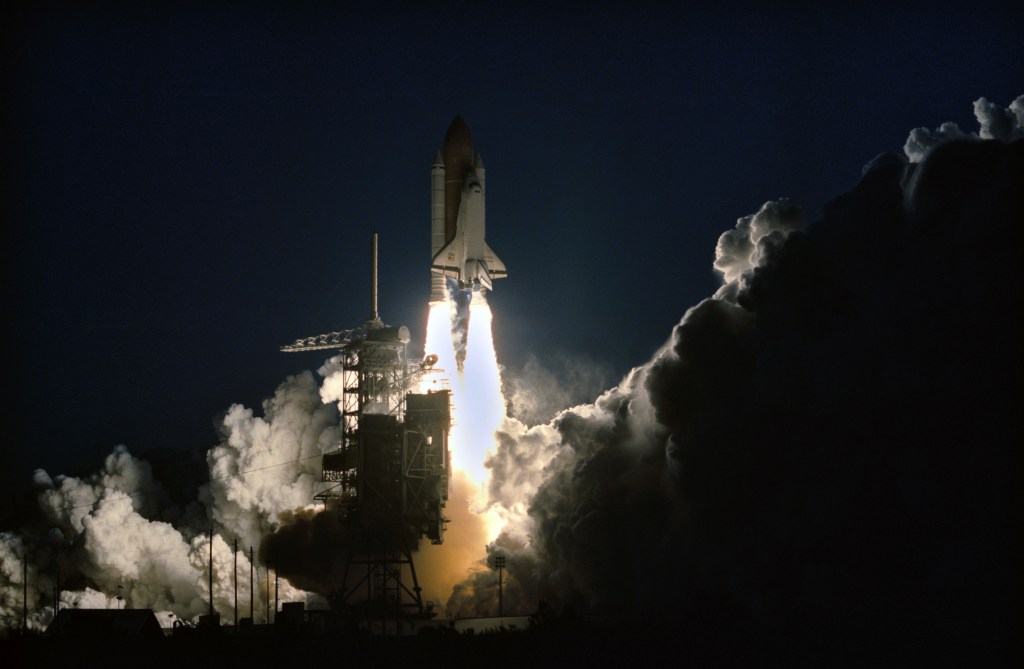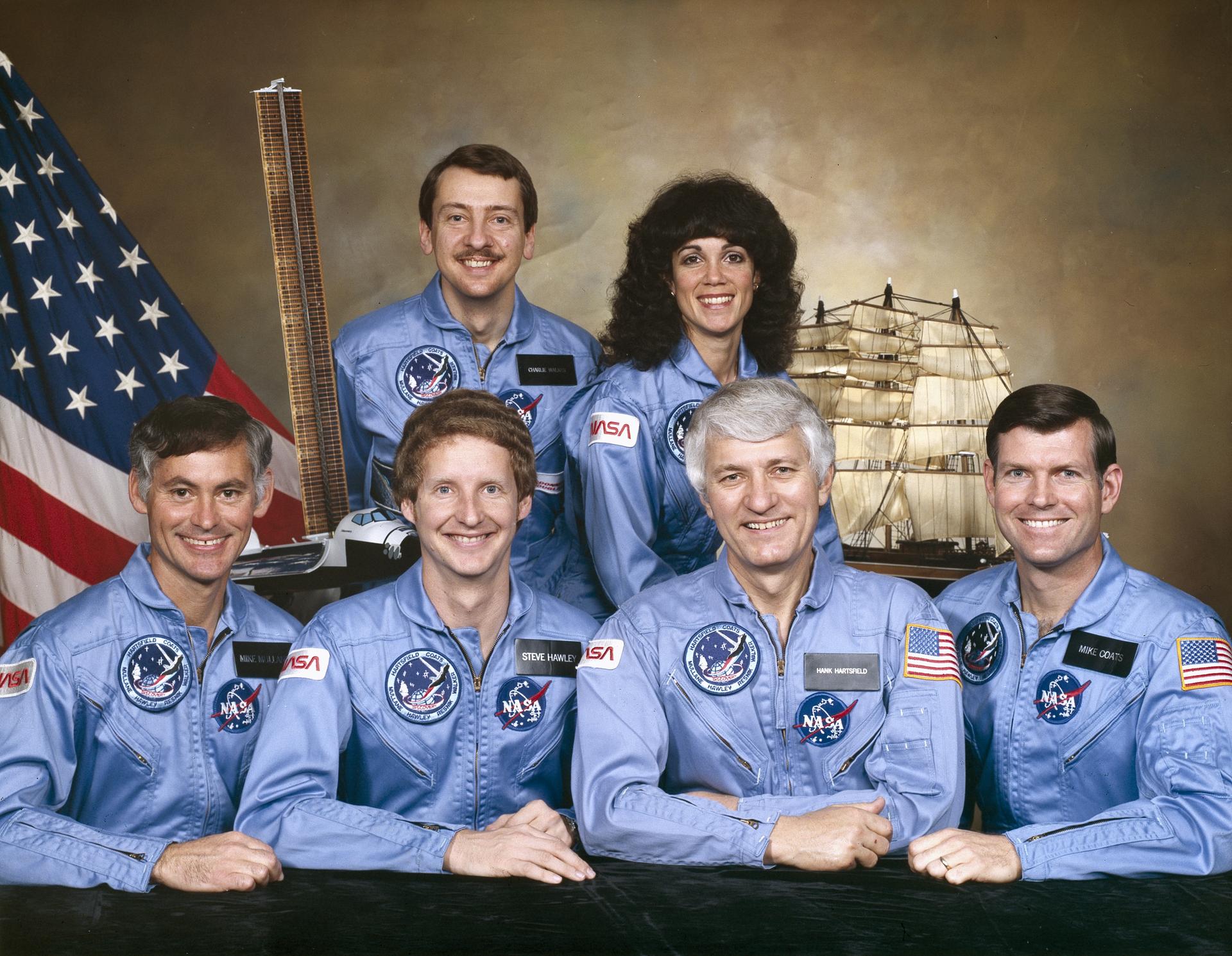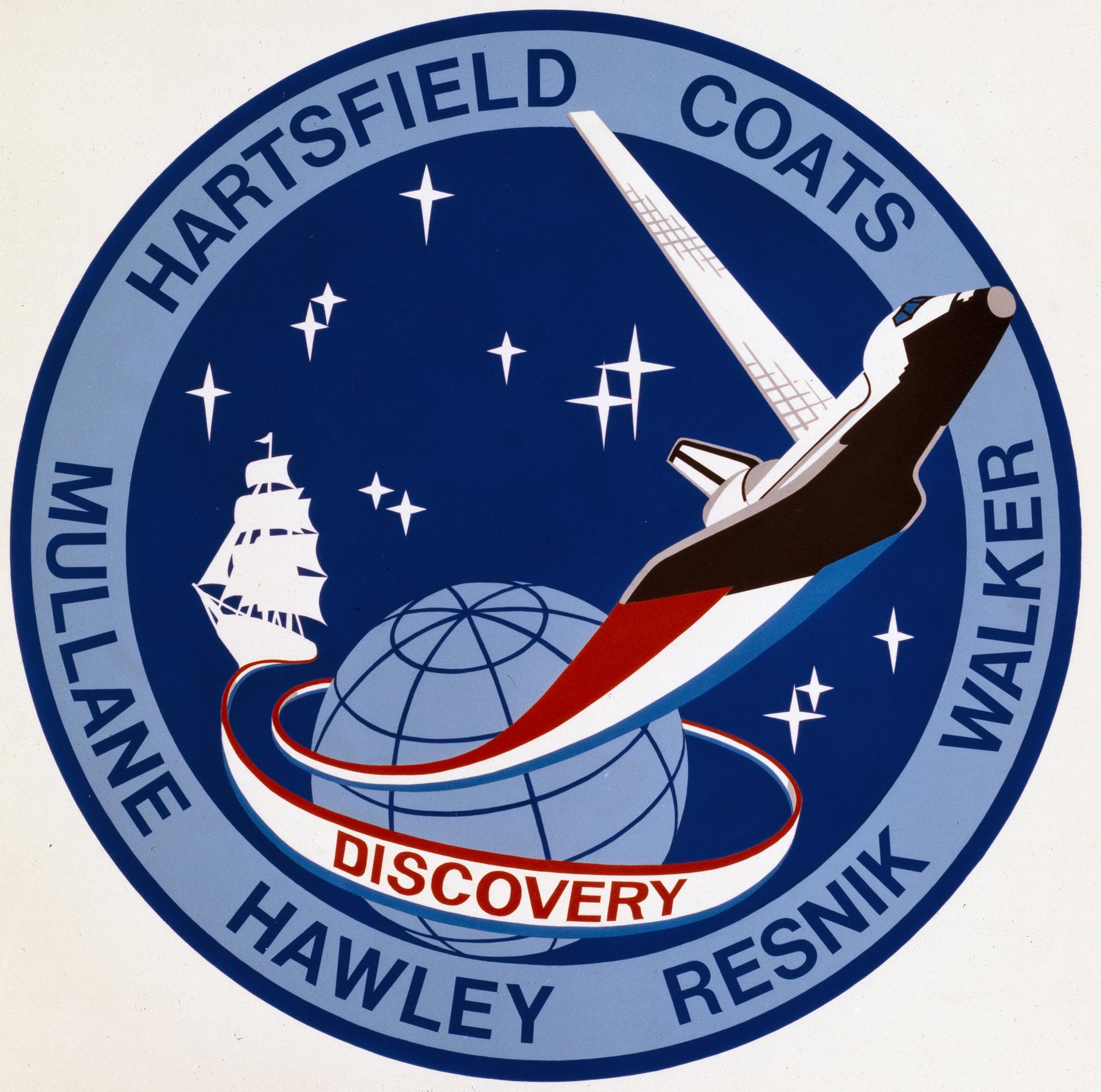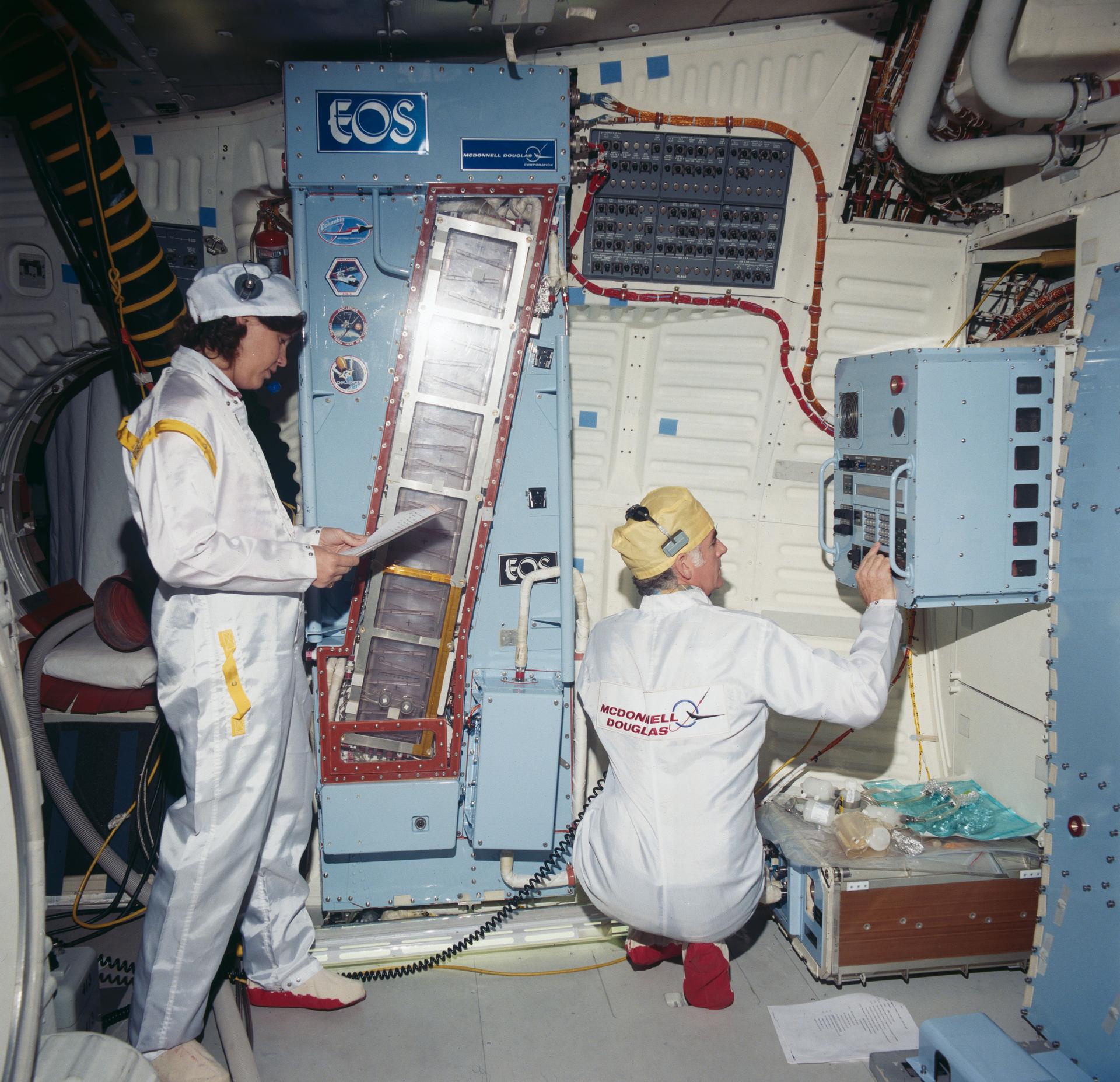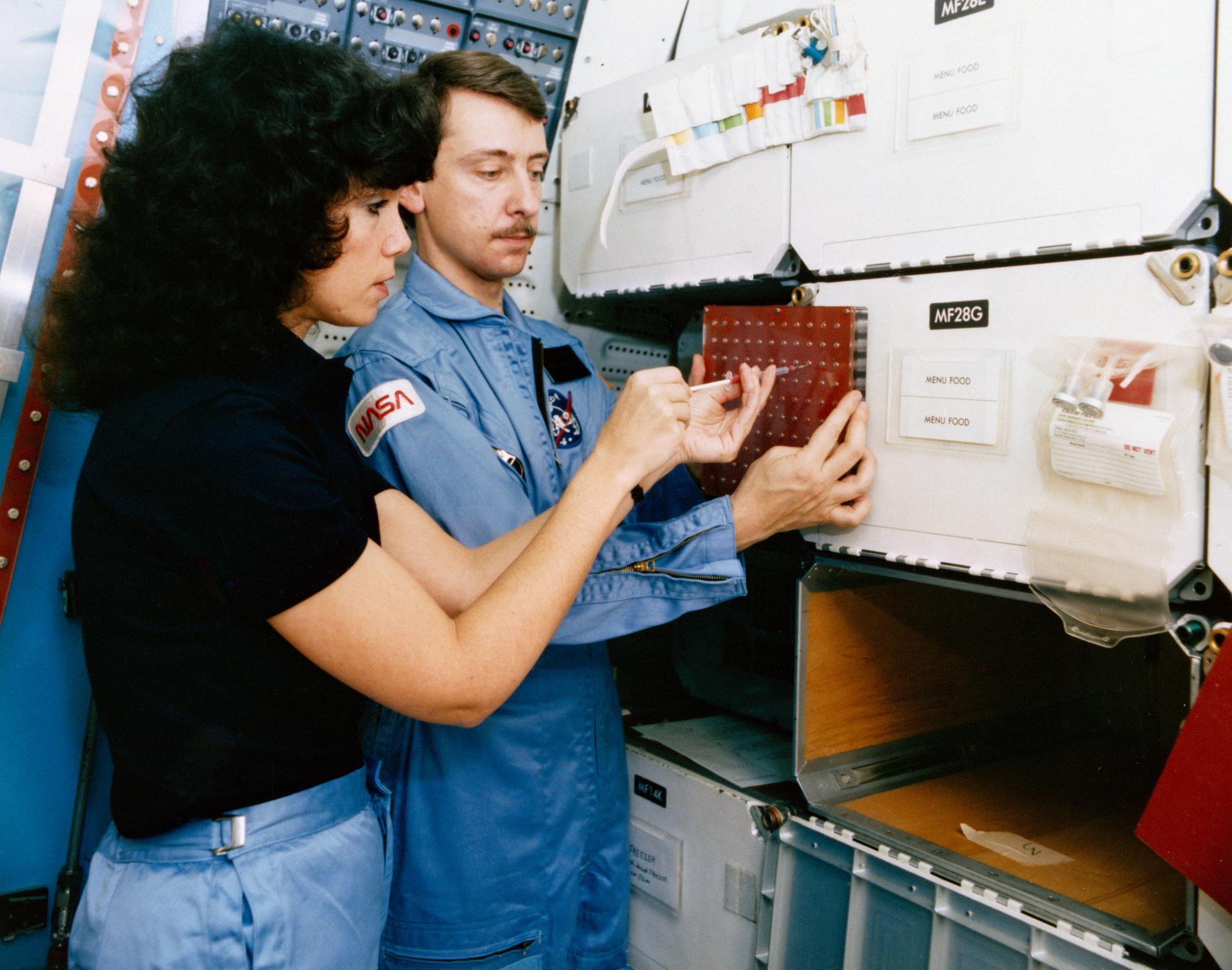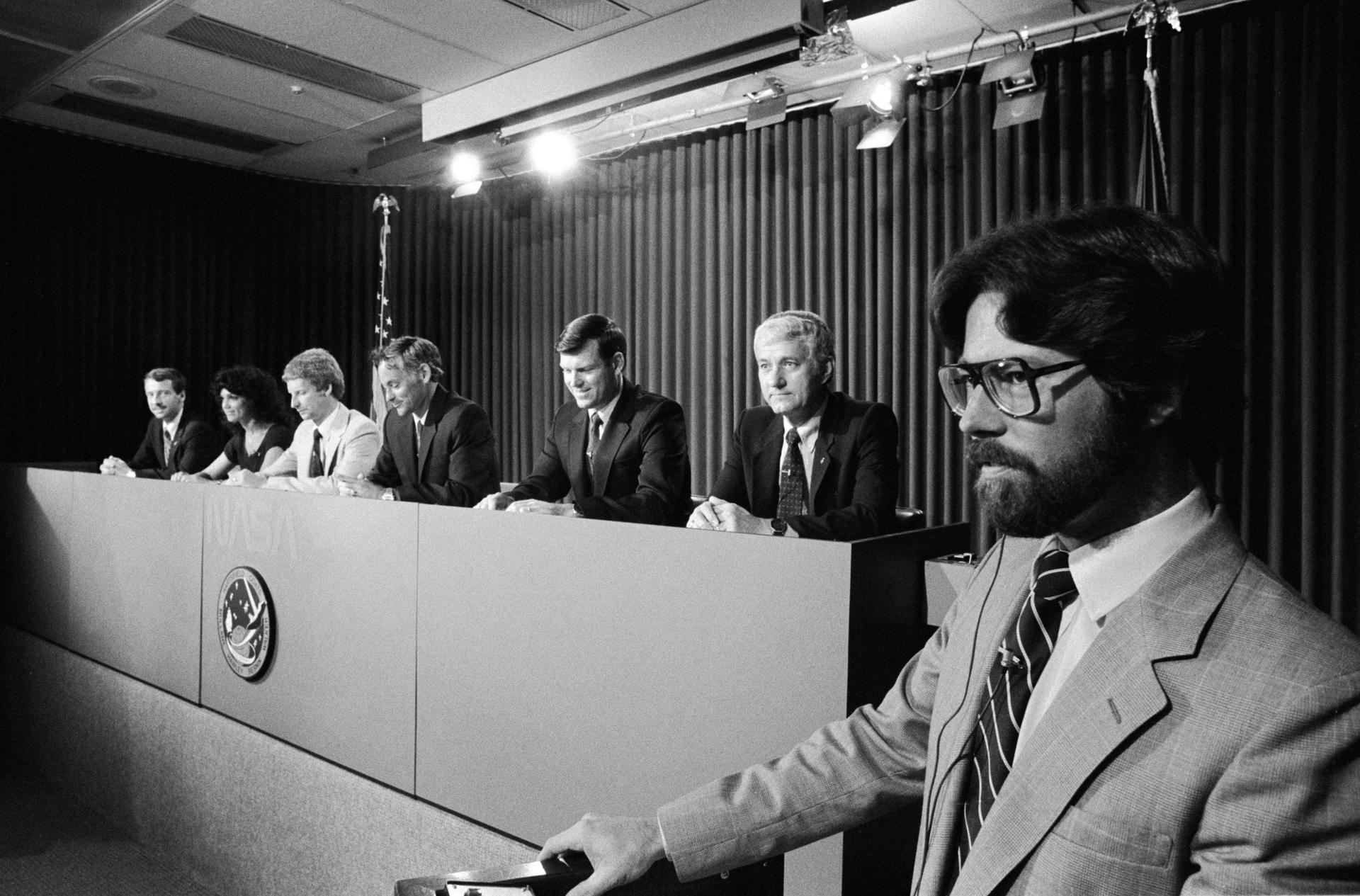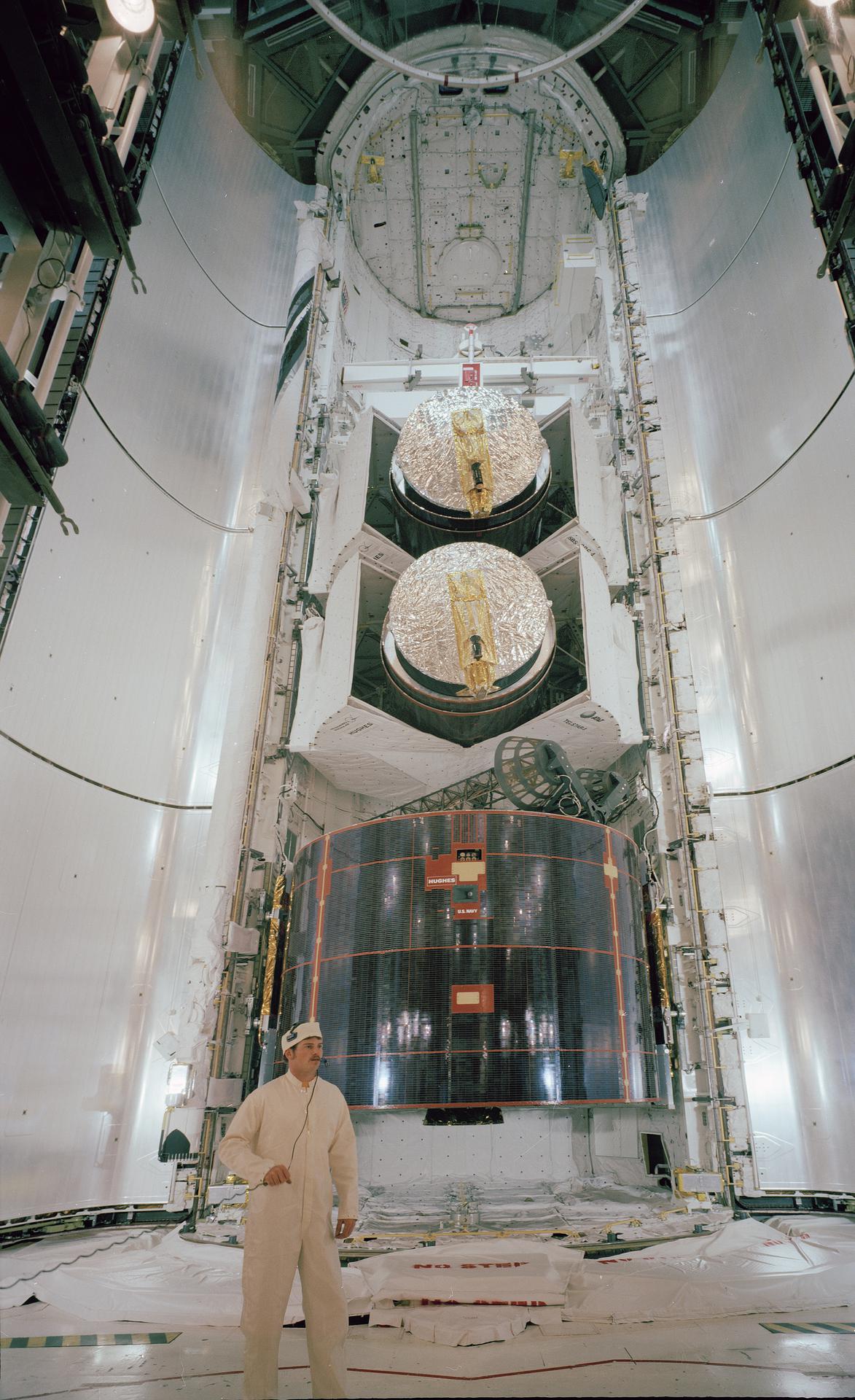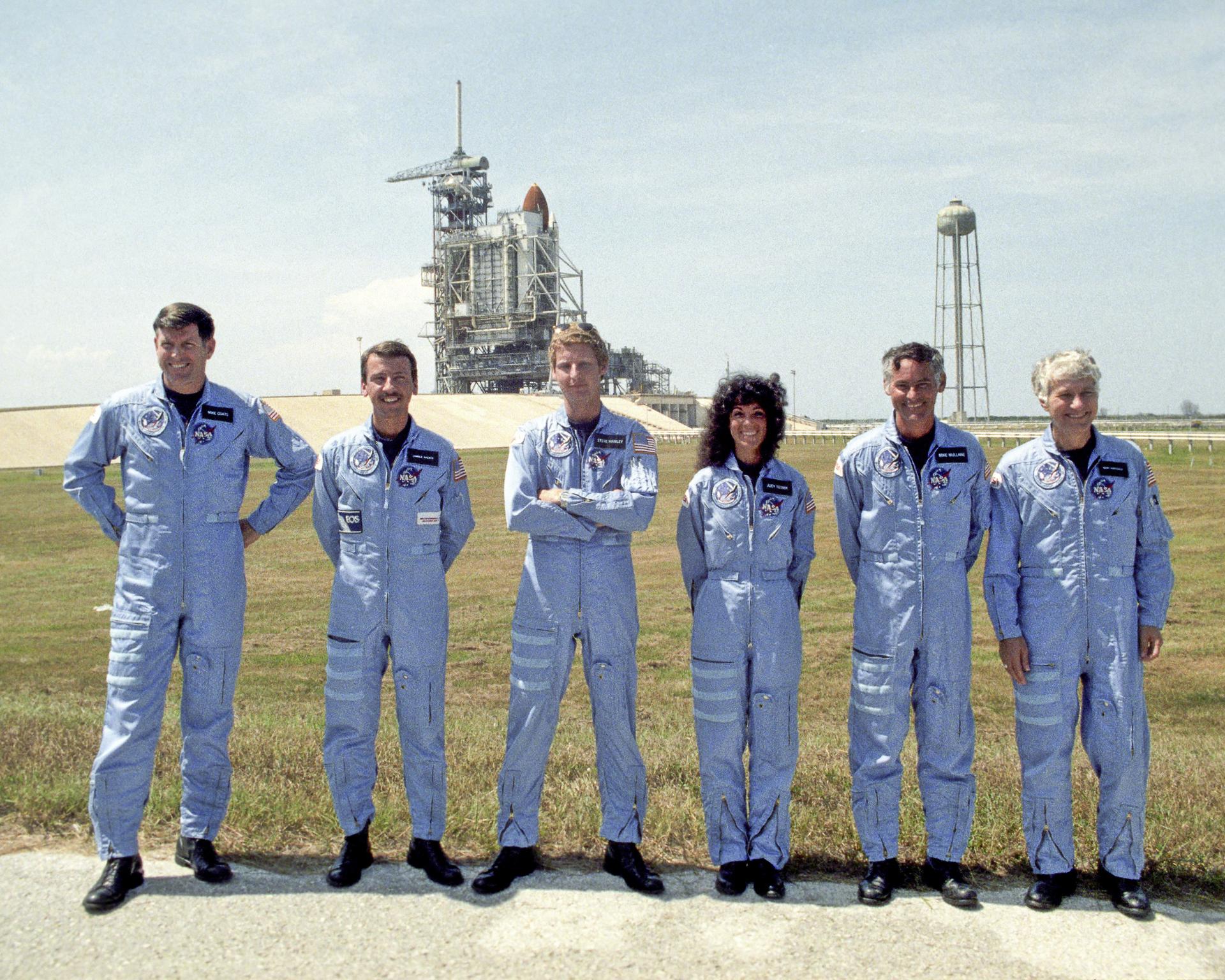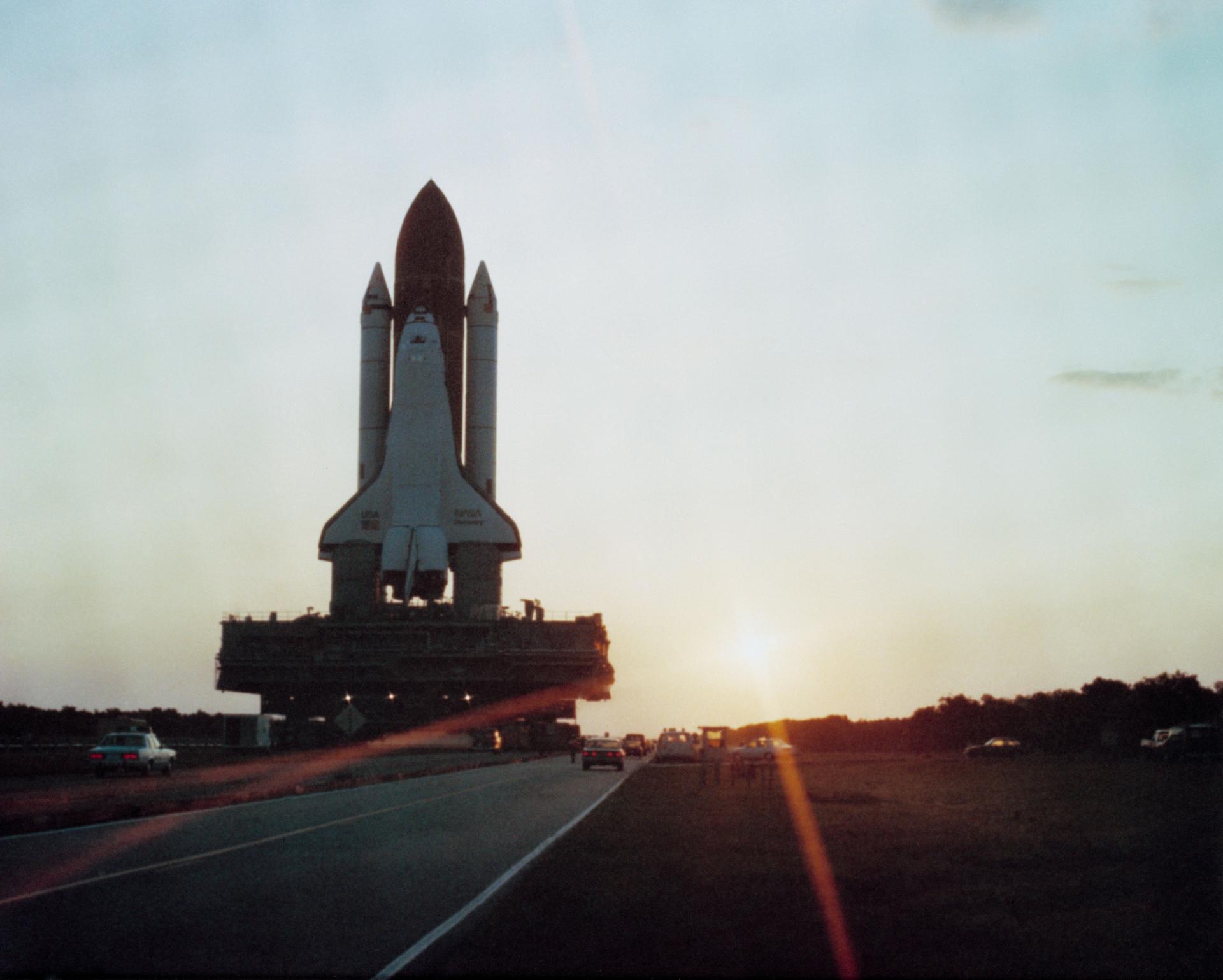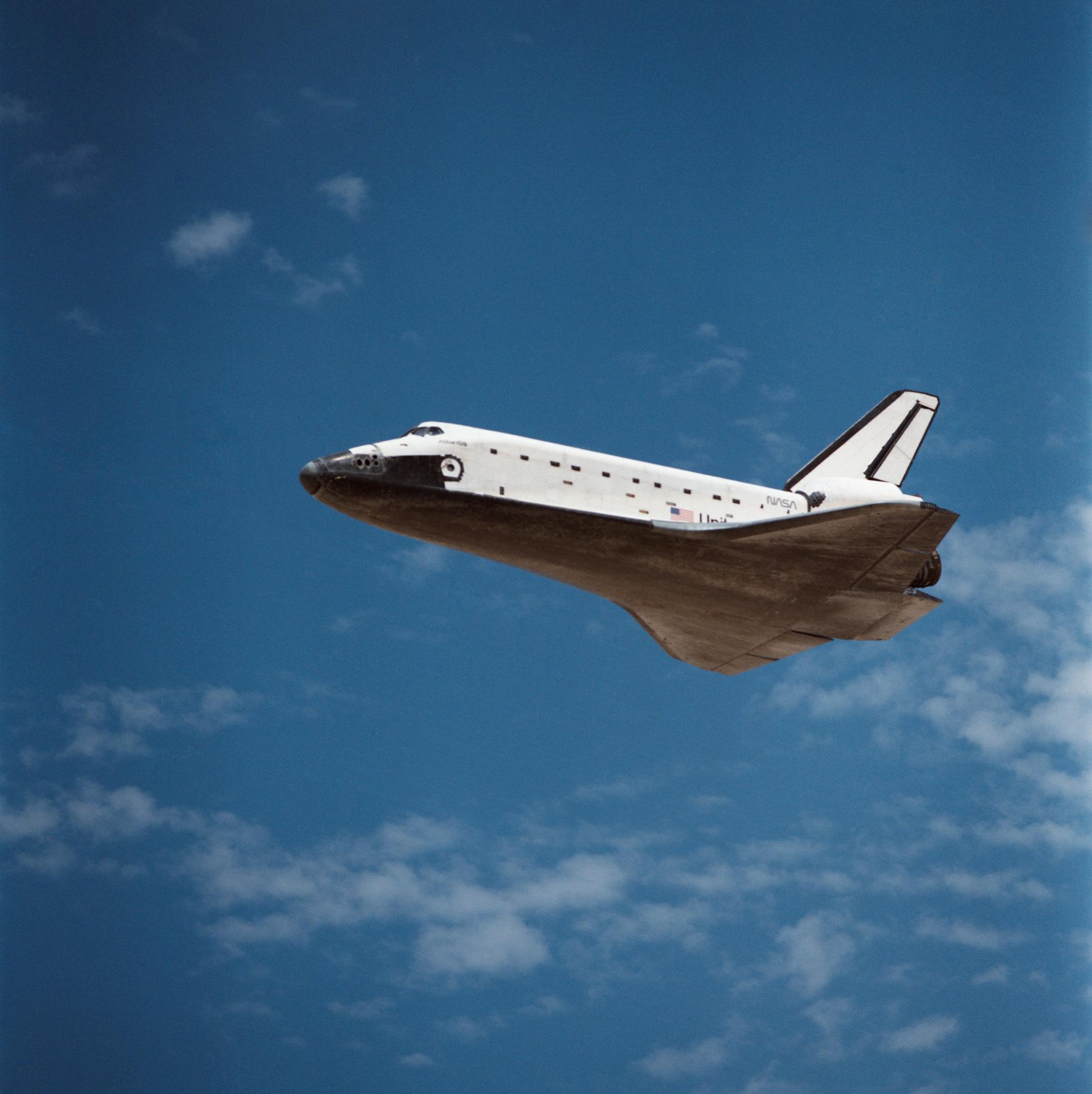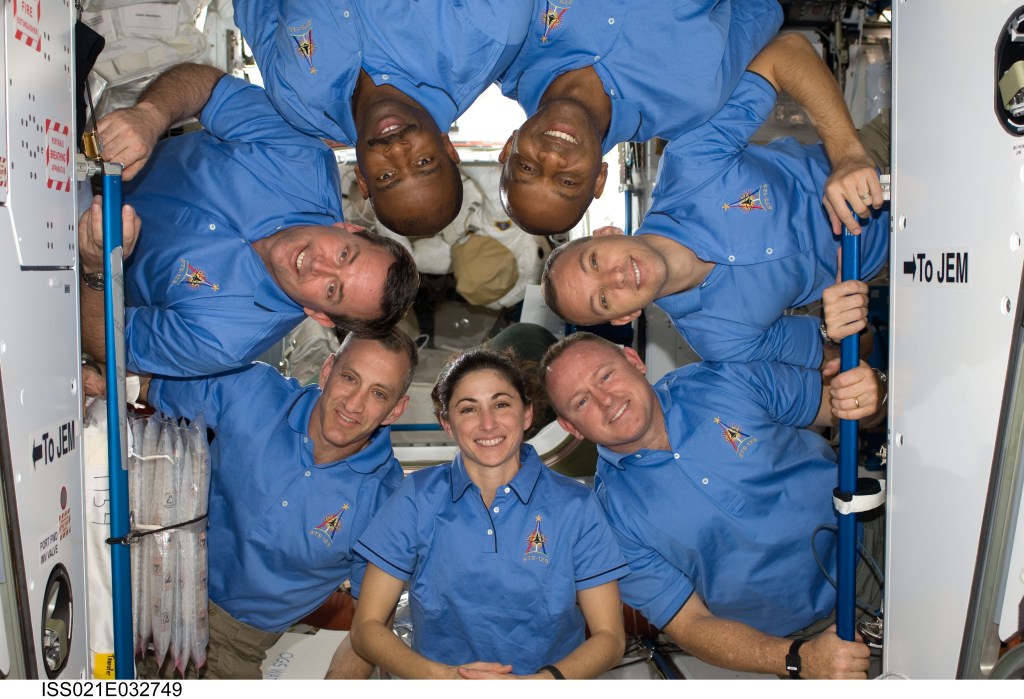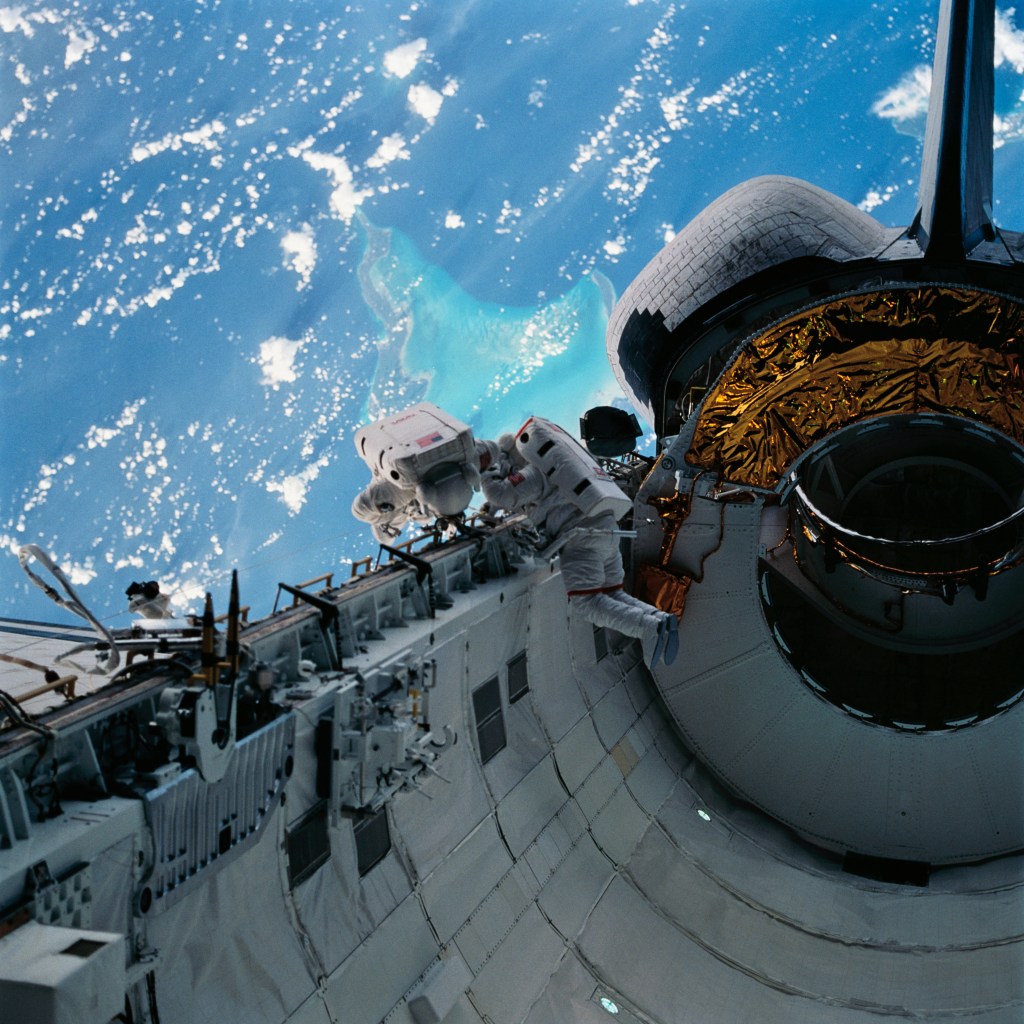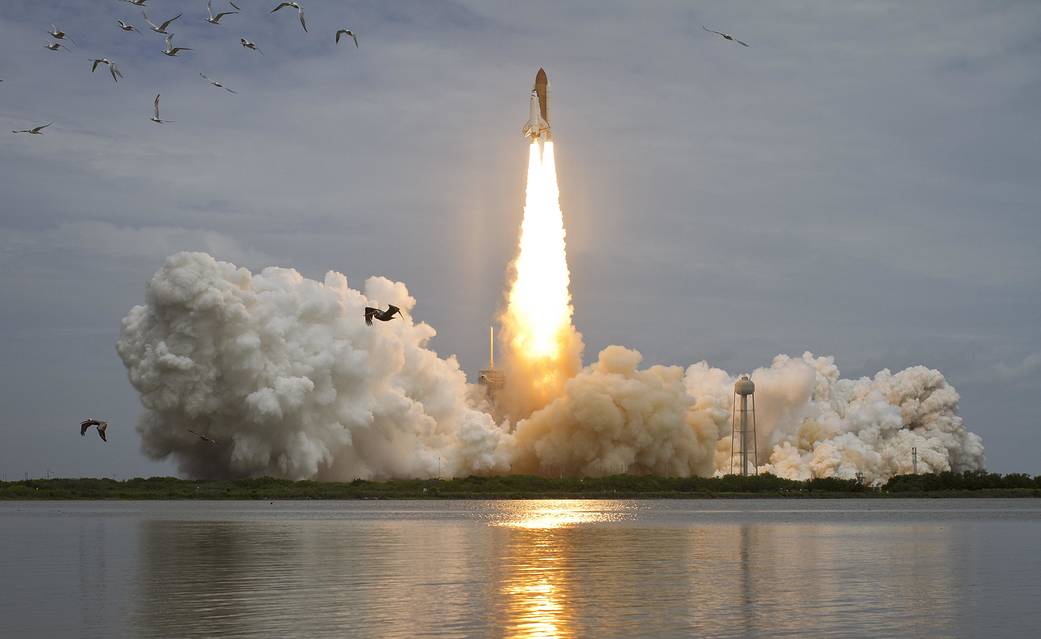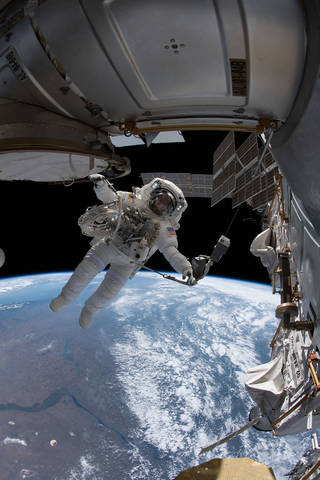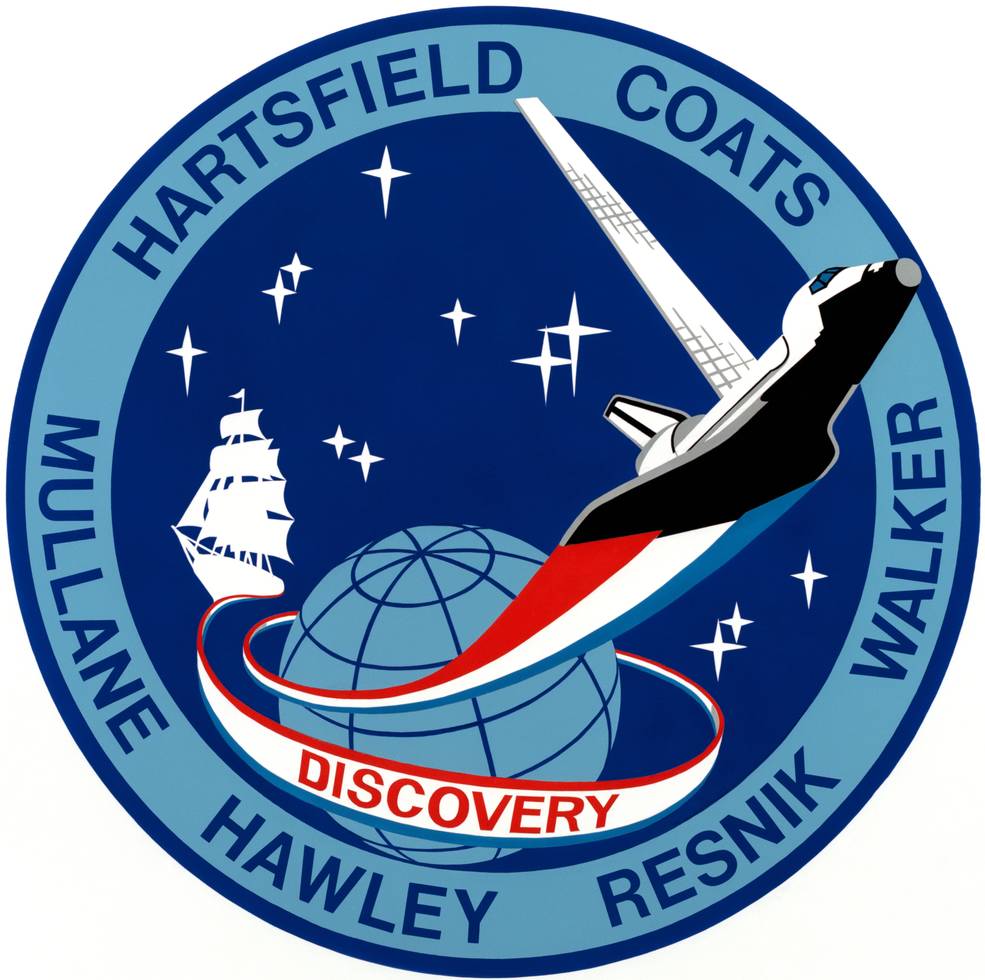
STS-41D
First flight of Space Shuttle Discovery. The primary payloads for the mission were three commercial communications satellites — SBS-4 for Small Business Systems, Telstar 3C for Telesat of Canada, and Syncom IV-2, also known as Leasat 2, for the U.S. Navy.
Space Shuttle
mission duration
Launch
Landing

STS-41D Mission Facts
Mission: SBS-D; Satellite Business System SYNCOM IV-2; Solar Wing TELSTAR
Space Shuttle: Discovery
Launch Pad: 39A
Launch Weight: 263,477 pounds
Launched: August 30, 1984 at 8:41:50 a.m. EDT
Landing Site: Edwards Air Force Base, Calif.
Landing: September 5, 1984 at 6:37:54 a.m. PDT
Landing Weight: 201,674 pounds
Runway: 17
Rollout Distance: 10,275 feet
Rollout Time: 60 seconds
Revolution: 97
Mission Duration: 6 days, 0 hours, 56 minutes, 4 seconds
Returned to KSC: September 10, 1984
Orbit Altitude: 184 nautical miles
Orbit Inclination: 28.5 degrees
Miles Traveled: 2.5 million
Crew
Henry W. Hartsfield, Jr., Commander
Michael L. Coats, Pilot
Judith A. Resnik, Mission Specialist
Richard M. Mullane, Mission Specialist
Steven A. Hawley, Mission Specialist
Charles D. Walker, Payload Specialist
Mission Highlights
Three satellites deployed during this mission: Satellite Business System SBS-D, SYNCOM IV-2 (also known as LEASAT2) and TELSTAR. The 102-foot-tall, 13-foot-wide Office of Application and Space Technology (OAST-1) solar wing extended from the payload bay. The wing carried different types of solar cells and extended to its full height several times. It demonstrated large lightweight solar arrays for a future in building large facilities in space such as a space station. Other payloads included were: Continuous Flow Electrophoresis System (CFES) Ill; Radiation Monitoring Equipment (RME); Shuttle Student Involvement Program (SSIP) experiment; lMAX camera, being flown for a second time; and an Air Force experiment, Cloud Logic to Optimize Use of Defense Systems (CLOUDS).
STS-41D
Shuttle News
35 Years Ago: STS-41D – First Flight of Space Shuttle Discovery
Space Shuttle Discovery, named after several historical ships of exploration, was the third space-qualified orbiter to be added to the…
Read the Story